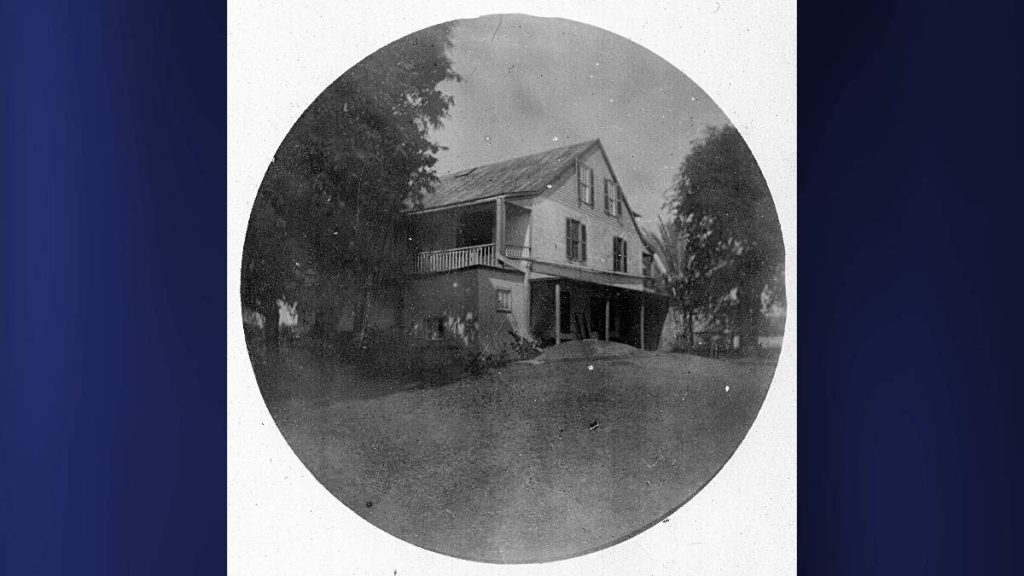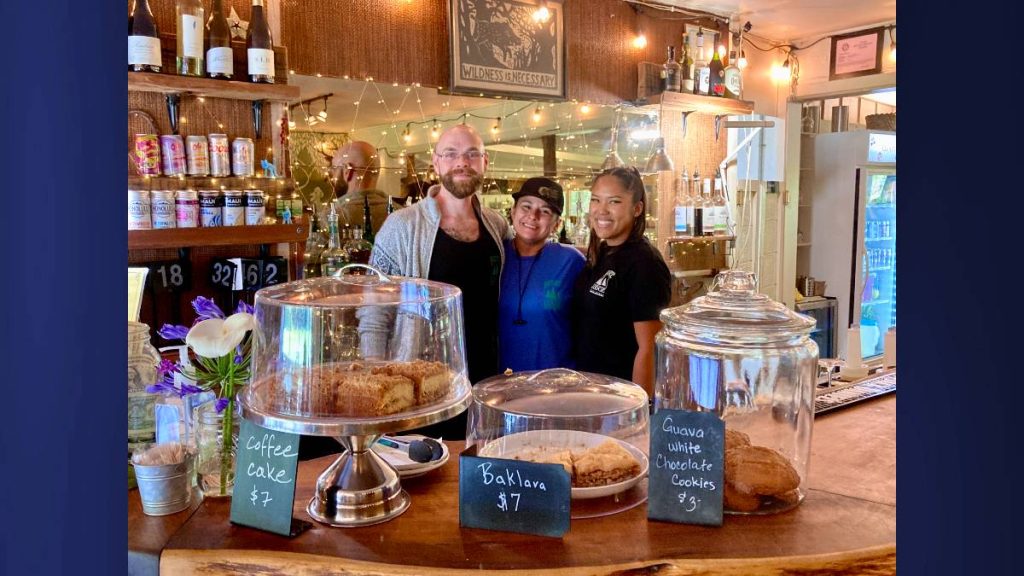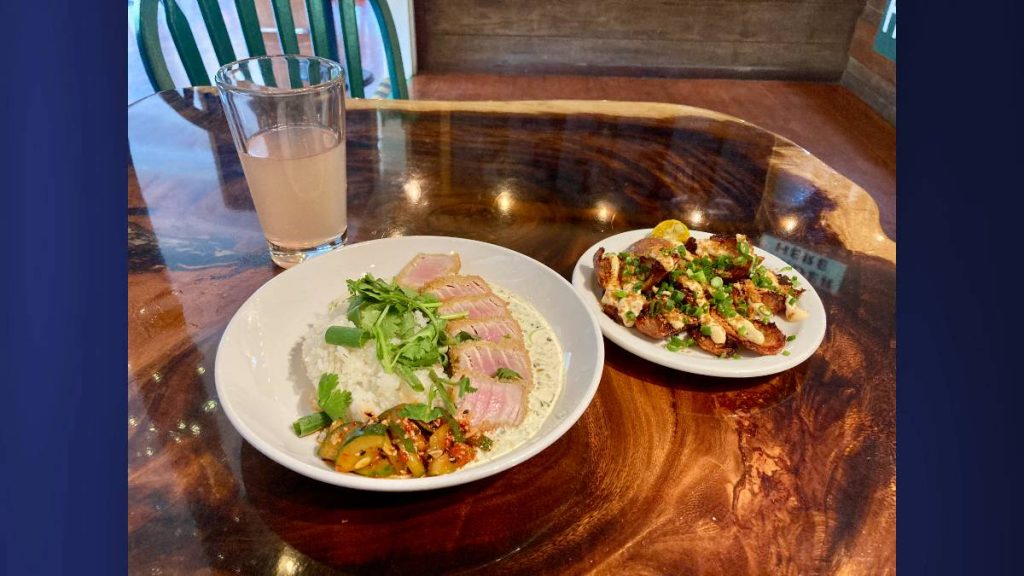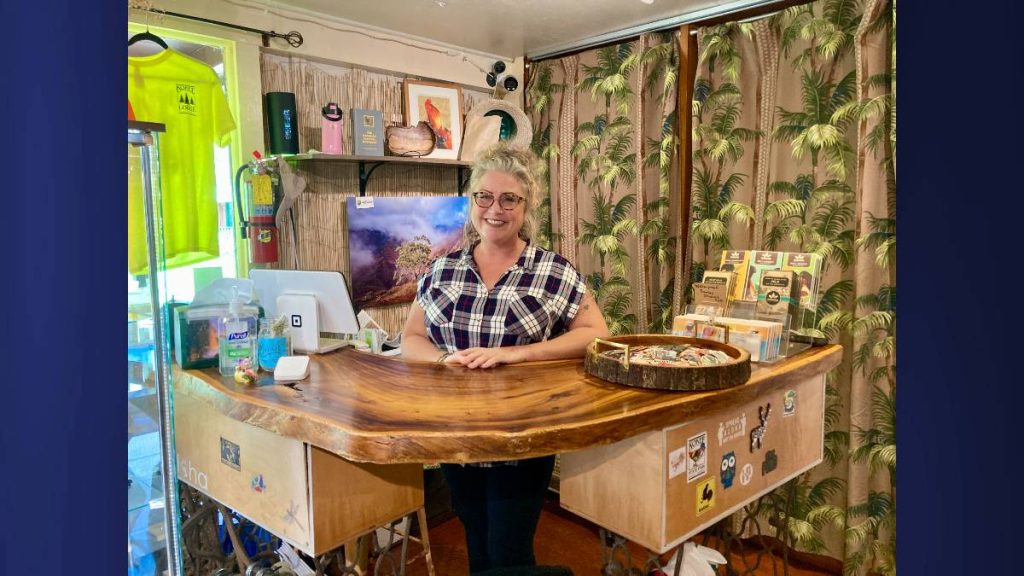Hale Puna restoring oldest house on Kaua‘i

A westside nonprofit is making headway in restoring the oldest building on Kaua‘i – while its business counterpart expands its community programming in Kōkeʻe State Park.
Hale Puna was founded in 2016 by Kekaha resident Jim Ballantine, who was born in Waimea before embarking on a globe-trotting career as an animation producer. He worked at Disney and Nickelodeon, earning credits on “The Little Mermaid” and “The Ren & Stimpy Show” – for which he received an Emmy nomination – before taking jobs in Israel, France and Australia, where he worked with international children’s characters like Maya the Bee and Blinky Bill.
Then an epiphany struck Ballantine while hiking in New Zealand in 2014.
“It was like a voice out of the blue. It said: ‘You’ve got to go back and fix that house,’” he said.
That house is the Gulick-Rowell House, a two-story dwelling on the National Register of Historic Places constructed for Christian missionaries nearly 200 years ago in Waimea. Today, it is located on a backstreet within the immediate vicinity of a middle school and Kaua‘i Veterans Memorial Hospital. The site is readily identified by the gargantuan monkeypod shading its front yard; tradition claims it is the first such tree planted on the Garden Isle.
The house is notable for its New England architecture and use of ōhiʻa lumber and coral limestone blocks cut from offshore reefs by Hawaiian workers, who were paid with goats, Bibles, textbooks and other items by the original homeowner the Rev. Peter Johnson Gulick. The building, according to Ballantine, was eventually acquired by his great-grandfather – Kaua‘i sugarcane magnate Hans Peter Fayé – in the early 20th century.
By 2016, Ballantine had left Down Under and reestablished himself on Kaua‘i, four doors away from his childhood home. He founded the nonprofit Hale Puna to promote the cultural and economic vitality of the island’s West Side, with the Gulick-Rowell House at its center. Hale Puna soon established a weekly farmers market and food forest on the one-and-a-half-acre property.
“When we started it, it was about, ‘Let’s bring some life to this place.’ But the question always is, ‘What does the community want?’” Ballantine said. “There’s also, ‘What’s the community need?’ I’m not sure it’s really up to me. I’m more of a carpetbagger coming in.”
Hale Puna recently received a $400,000 grant-in-aid from the State of Hawai‘i to advance the nonprofit’s renovation of the Gulick-Rowell House. First steps will include the pouring of a concrete base on which to build a new lanai. But the building, when completely rehabilitated, will be more than an artifact of a past era. Hale Puna leadership wants it to become a community hub for locals in the here and now.
“Museums are boring,” Ballantine said. “It needs to be a lively space where we’re talking about, ‘Who are we? What is the community?’ That sort of thing.”
Hale Puna Executive Director Anne Coyle envisions a quiet space for area kūpuna. In addition to the adjacent hospital, several care homes are near the Gulick-Rowell House.
“They could come and have coffee or tea on the lanai, enjoy the garden and maybe do some therapeutic gardening,” she said. “But we have a lot to do before we get there.
“It’s not just preservation. It’s adaptive reuse … The idea is to revitalize it and make it a living place that people can use and enjoy,” Coyle continued. “It’s not just an old building that we’re going to restore and then keep like an old antique you have wrapped up in your attic. We want to really make it a place that people come and use.”
While the Gulick-Rowell House remains a work in progress, Hale Puna has already succeeded in revitalizing another West Side property: Kōkeʻe Lodge, located nearly 16 miles north in Kōke‘e State Park above Waimea Canyon.
The lodge facing Kanaloahuluhulu Meadow started life in the late 1930s as a mess hall for the neighboring Civil Conservation Corps camp, according to Ballantine, who claimed it had become “a scary ‘Night of the Living Dead’ kind of place” when the property’s trust gifted its lease to Hale Puna in 2016. Since then, Kōke‘e Lodge has increased its annual payroll from approximately $200,000 to $2 million, while quadrupling the size of its staff.
Today, the lodge is a cozy restaurant, café and gift shop complete with a massive fireplace and rustic decor, including tables made from timber from the Gulick-Rowell House monkeypod tree. Its menu and rural atmosphere have made it a favorite among tourists and locals alike.
“It’s comfort food at its best, with a little flair here and there,” said cook Anya Kaohi, whose grandmother, Aletha Kawelukawahinehololioolimaloa Goodwin Kaohi, is an esteemed West Side historian. Goodwin Kaohi provided Hale Puna with its name meaning “House of Limestone.”
Kaohi is one of several cooks who work under head chef Dominic Garcia, who prizes local ingredients above all things: His team carves Kaua‘i fish and beef; Maui venison; and Big Island lamb. Their fruits and vegetables are sourced from on-island farmers through Mālama Kaua‘i and the Hale Puna farmers market, as well as the Hale Puna food forest. Garcia even prepares dishes using components sourced from the Kōke‘e landscape, topping salads with a neon-green oil derived from nasturtium close by.
“Using local, you’re going to get better ingredients … And when you use local products, that money’s going back into the local economy, which is a huge thing,” Garcia said. “I like to say you’re only as good as your ingredients.”
Starting in May, Garcia will prepare six-course preset dinners at Kōke‘e Lodge every month. The fine dining experiences – Garcia describes them as “very fun” opportunities to showcase higher-end ingredients – are a departure from the restaurant’s typical fare. But they represent only a portion of the lodge’s vision for the future.
“We’ve got live music [but] we’re trying to do more – all sorts of things. Magicians, chess clubs, live music gigs. If you have an event that you think would remotely fit well at the lodge, we’d love to have you,” said manager Bailey Hutton. “We’re trying to get way more involved in the community.”
The 68-year-old Ballantine is now attempting to step back from active leadership at Hale Puna and Kōke‘e Lodge. He’s got plenty to keep him occupied, including work in local theater productions and consideration of his place on Kaua‘i, an island once dominated by wealthy ancestors like Hans Peter Fayé.
“How responsible are we for the sins of our fathers? I think you come into whatever legacy you come into and then it’s yours to do with it as you can,” Ballantine said. “I’m not fantastically wealthy … But I do feel a real responsibility to the place, and place meaning not just the land but of course the spirits and what have you.
“I think my great-grandfather was probably a good guy for his time, doing what all the other guys were doing. But could they have treated their workers better? Probably,” he continued. “They used all that land to grow sugar for all those years. But did they plant a single tree? No. As stewards of the land, I would say they maybe didn’t have the concepts we have today, but I think they could have done a better job. I think the idea of exploitation is not caring about what comes next.”
To learn more about Hale Puna, the Gulick-Rowell House and its other initiatives, visit halepuna.org.
Kōke‘e Lodge is open seven days a week, 365 days a year, from 9:30 a.m. to 4:30 p.m. Live music is held on Sundays, Mondays, Tuesdays and Thursdays. For more information about Kōke‘e Lodge, including upcoming events, visit its website here. You can also follow the business on Facebook and Instagram.
Inquiries regarding Kōke‘e Lodge events may be emailed to Hutton at info@kokeelodge.com.
Sponsored Content
Comments
























